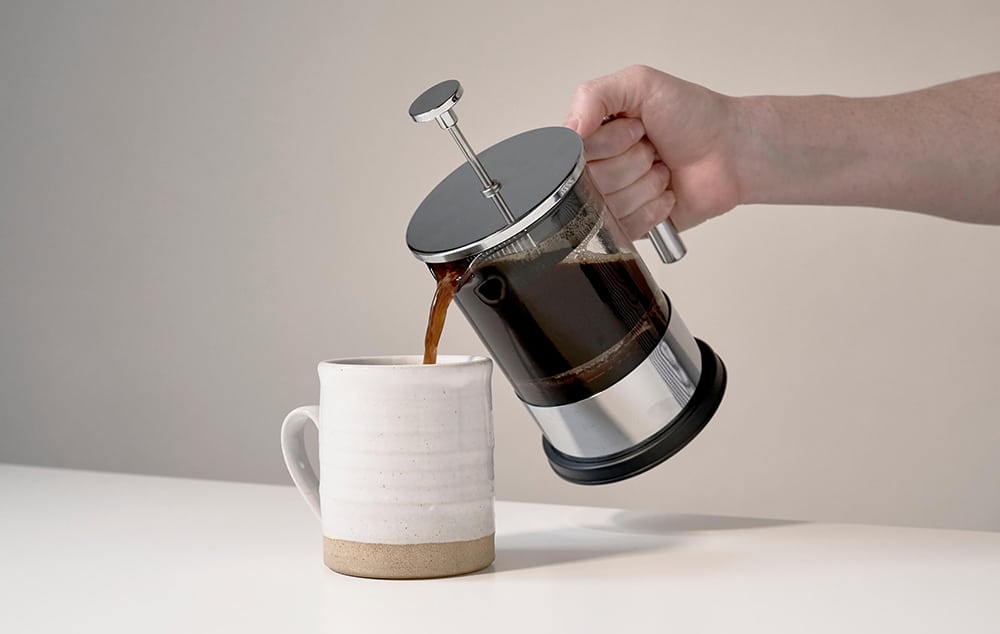

As your body becomes used to consuming caffeine, you will invariably need to drink more and more of it to experience a buzz. When you move from drinking no cups of coffee to drinking a cup, you will feel an energy boost. However, due to frequent consumption, your body tends to adjust to the caffeine content, and then from one, you’d need two cups to have the same buzz. If you continue with two cups, pretty soon, you’d need more than that.
How long does it take to reset caffeine tolerance? It depends on your level of tolerance and a host of other factors. Well, in this post, we provide all the information that you need to have concerning caffeine and tolerance. We offer a practical guide on how to reset tolerance, what causes caffeine tolerance, and several other vital information.
Someone who hasn’t used caffeine in a long time, or that has never used caffeine is said to have a zero-tolerance to caffeine. Caffeine is alien to the body as it isn’t made naturally by the body; neither is it an essential nutrient.
When you have zero tolerance to caffeine, drinking it can produce in you feelings of euphoria, a heightened mental awareness, and positive emotions.
Now, when you drink that same amount of coffee as you drank yesterday, this same amount will produce the effects as mentioned above, albeit to a lesser degree. As a person continues to drink the same amount of caffeine daily, the body becomes tolerant, and these positive effects will significantly reduce over time. In fact, if you have an intolerance, you will feel normal when you drink it.
Instead of increasing alertness, the drinker might notice that he doesn’t feel ”normal” until he or she has drunk the daily dose of caffeine.
The caffeine found in coffee comes with a similar chemical structure to adenosine. Let’s discuss how caffeine works and how the tolerance is built.
Caffeine is a central nervous system stimulant. When you drink coffee, the caffeine found in it goes to your brain, and the most obvious effect that you experience is alertness. Because it makes you feel more alert, it is no wonder that it is heavily consumed by people with active lifestyles or folks that wish to stay awake for an extended period.
Caffeine is closely related to adenosine. Adenosine is created in the brain, and it binds itself to adenosine receptors. When bound, the adenosine ”weighs you down”. It causes drowsiness slowing down brain nerve cell activity.
Now, to a nerve cell, caffeine is eerily similar to adenosine. Hence, when you drink caffeine, instead of the adenosine binding with the receptor, it is the caffeine that binds to the receptor. Instead of slowing down brain nerve activity, this binding increases the speed of the nerve cells.
Some of the effects of caffeine include:
While all these are great, caffeine tolerance can pose a problem.
 Symptoms of caffeine tolerance
Symptoms of caffeine toleranceCaffeine tolerance can be dangerous. Aside from the fact that it acts like a drug, and it is never a good idea to rely on it to feel a normal level of energy, a high caffeine tolerance leads to drinking too much caffeine.
Drinking too much coffee can cause liver fatigue, general exhaustion, sleep deprivation or disruption, and several other adverse side effects.
Additionally, the crash that comes after drinking a high amount of coffee can radically affect your health and productivity.
Although there is nothing wrong with drinking coffee for increased energy levels, especially when it is consumed appropriately, it might be time to reset your caffeine tolerance when you discover that you consume caffeine regularly or that you need a lot of it to feel energized.
Caffeine tolerance is acquired over time. From a study, it was discovered that complete caffeine tolerance occurred after 1 to 4 days among the study participants. To reach this conclusion, the researchers considered factors such as the blood pressure level, heart rate, and plasma epinephrine levels.
In this section, we will consider why it is vital for you to reset your caffeine tolerance. Here are some of the essential reasons.

If you observe that you heavily rely on coffee to have a ”normal” energy level, then you can use this method.
If you drink, for example, 6 cups of coffee every day, you can gradually reduce your consumption from six to four cups. It is recommended that you reduce the intake by half every few days. So, for the folks that drink six cups per day, you can go down to three cups for two or three days. For the subsequent days, you can drop the intake down to two cups. If you cut down on intake for over a week, pretty soon, you’ll be free of your addiction.
If you feel that is drastic, you can substitute the number of cups you drink with drinking tea. Thus instead of six cups of coffee, you could take three cups of coffee and three cups of tea. Do this until you can completely cut it out.
There are certain benefits to slowly cutting out the amount of caffeine you consume. These include:
By drinking plenty of water during this period, your body will quickly flush out the caffeine from your system.
If you thought the first step was drastic, then you might find this even more challenging. In this method, you will go cold turkey and not consume a single drop of coffee or caffeine until your energy levels reset.
If you are the impatient type who wants to get all the coffee out as soon as possible, this ”washout period” is highly effective. It will take about a week for you to do this to eventual success.
Have no doubts, it will be one of the most stressful weeks of your life, but it will be worth it in the end. You use a week without taking coffee and the second week for your body to reset itself.
One of the symptoms of resetting your coffee tolerance is headaches. When you drink coffee, the caffeine restricts the blood vessels. Hence, when you fail to take it, these constricted blood vessels relax and create plenty of pressure in the brain. It is this pressure that leads to headaches.
Going cold turkey all at once can cause several withdrawal symptoms. Although it is fast, temporary effects can be unpleasant. Some withdrawal symptoms experienced include:
As this process can be harrowing, you will need all the help that you can get. Here are some tips that can assist you during this stage.

To avoid going back to building a tolerance for caffeine, you must avoid all the things that you got wrong the first time around. How? By following these steps.
First of all, you have to start by drinking little amounts of coffee every day. You should discover what your daily limit is. This limit refers to the amount of coffee you will drink before you level out. Once you find out what this level is, then slowly work your way up to that peak. If you followed the first step to recovery, you’d notice that even the small doses that you drink hit you harder than they ever did before.
If you are looking to get rid of caffeine, then there are some alternatives to caffeinated coffee. This section contains information on these excellent alternatives.
It might not taste like coffee, but the unique taste and effect of bone broth makes it an excellent option. It has a pleasant, comforting taste and can even be made at home. If you cannot make it at home, you can find it in stores.
Chicory root coffee has a similar taste to coffee; however, it contains little to zero caffeine. It not only tastes good, but it is also beneficial to health. The root of chicory has prebiotics, which serves to feed your gut with healthy bacteria. It also contains a bit of every necessary vitamin.
Turmeric is an excellent herb, and it’s not surprising that it serves as an excellent alternative to caffeinated coffee. It does not remotely taste like coffee; however, it has a nice calming effect on the drinker.
It also comes with loads of health benefits. It boosts the immune system, aids digestion, enhances liver function, and much more.
Looking to get your day started on an energetic note? Then try out lemon water. It not only makes you feel active but also comes with several benefits.
Lemon water is popularly known for its use in weight management. Aside from helping to manage weight, it helps with boosting liver function.
Coconut water is precious in electrolytes that ensure your system remains hydrated. It has a sweet taste that might be appealing to you, especially if you enjoy your coffee laden with sweeteners.
If you have not yet experienced caffeine tolerance, the best course of action is to prevent it from happening in the first place. Hence, drink it sparingly so that you will always get a kick when you drink it. If, on the other hand, you suffer from caffeine tolerance, use the tips and advice found in this article to reset your caffeine tolerance. Although it might be somewhat difficult, go through with the process. In the end, you will benefits greatly from making this sacrifice.





